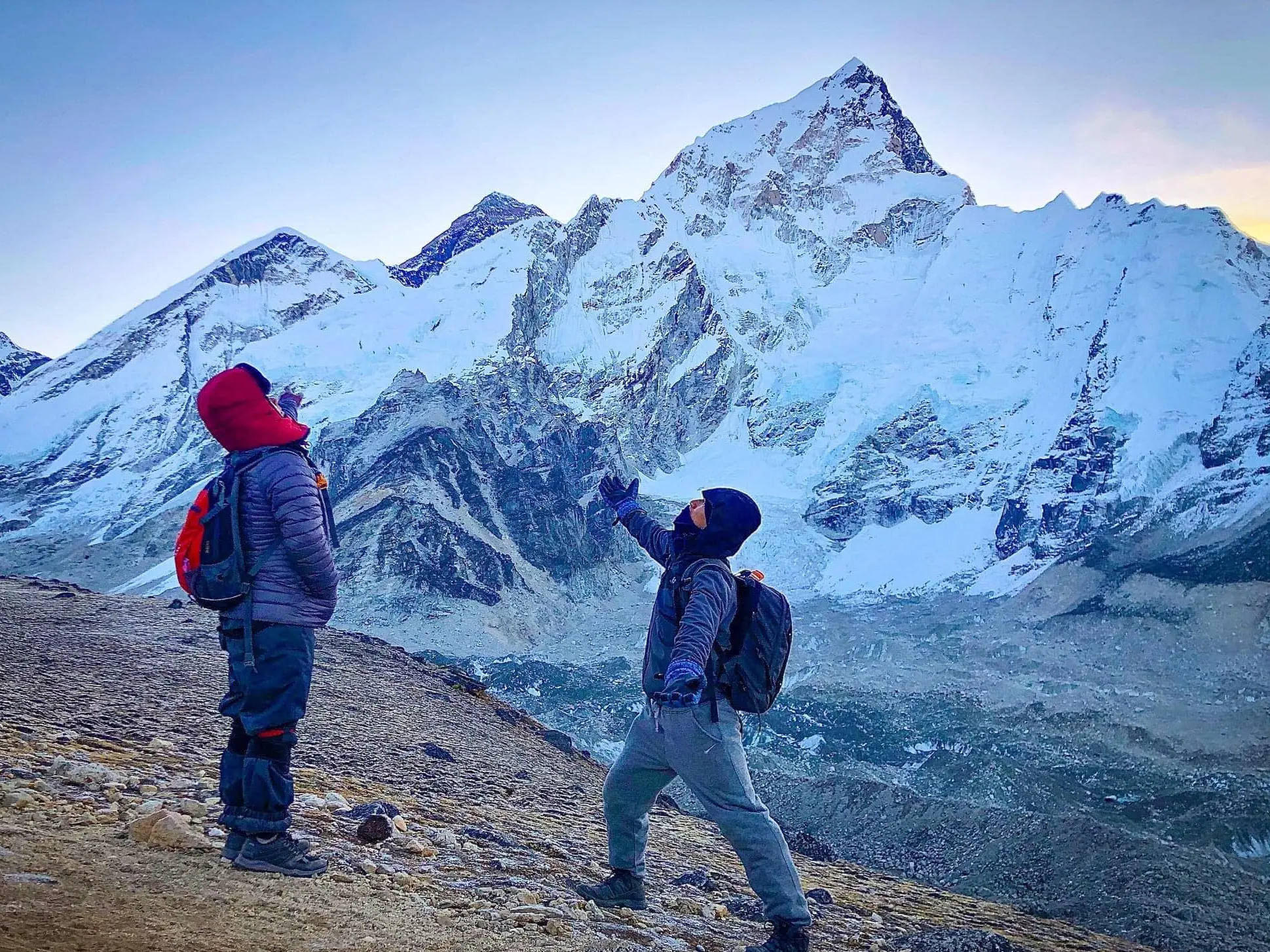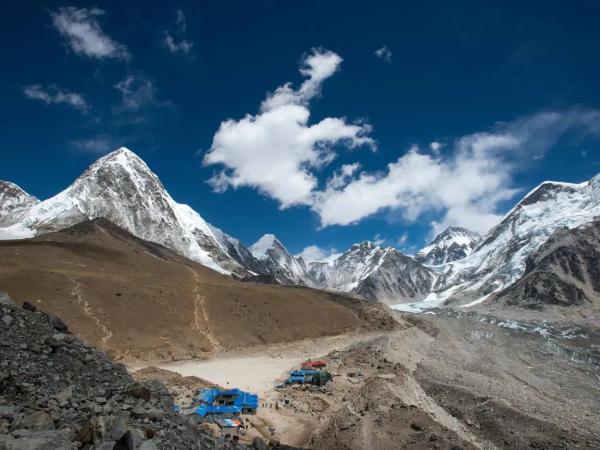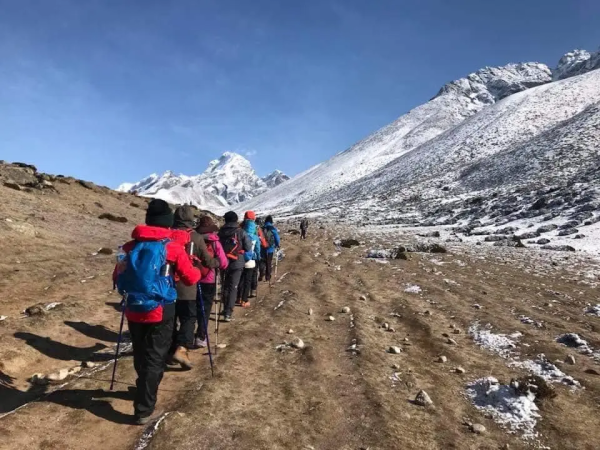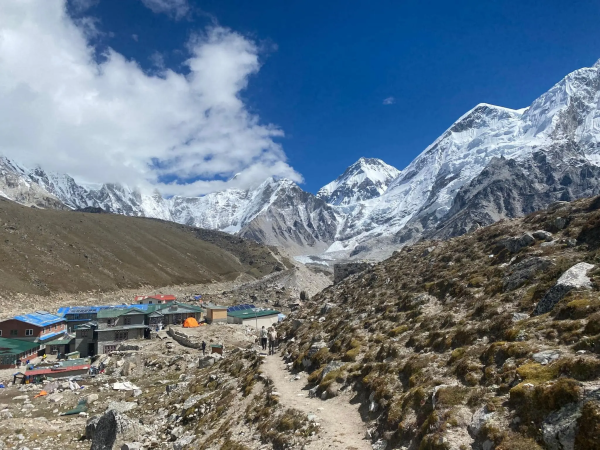Is Everest Base Camp Trek Possible for Travelers from Singapore and Vietnam?
Travelers from Singapore and Vietnam can definitely embark on the Everest Base Camp (EBC) trek, and companies like Odea Services specialize in making...

The Everest Base Camp (EBC) trek is one of the most iconic and thrilling trekking experiences in the world. Nestled in the heart of the Himalayas, this trek takes adventurers through rugged mountain terrain, vibrant Sherpa villages, and breathtaking landscapes dominated by the world’s highest peak, Mount Everest. The journey to Everest Base Camp itself is not just a physical challenge but a spiritual and cultural immersion, offering trekkers the chance to witness the lifestyle of the local Sherpa community and experience the stunning natural beauty of the region.
This trek, typically lasting around 12-14 days, is favored by those seeking to combine adventure with cultural enrichment. Along the route, trekkers can explore ancient monasteries, rhododendron forests, and panoramic views of towering peaks such as Lhotse, Nuptse, and Ama Dablam. It’s important to note that the trek involves high altitude trekking, requiring a gradual ascent to avoid altitude sickness. Guided by experienced companies like Odea Services, trekkers receive expert support in logistics, permits, and acclimatization strategies, ensuring both safety and enjoyment throughout the journey.
Key points:
The Everest Base Camp trek offers an unparalleled opportunity to step into the world of high-altitude mountaineering without actually climbing Everest itself. As you trek to the base camp, you gain insight into the lives of the Sherpa people who have been integral to Himalayan mountaineering for decades. This trek is not just about reaching the destination but appreciating every step through stunning valleys, traditional teahouses, and diverse ecosystems.
The trek starts from Lukla, a small town with a famously challenging airstrip, and winds through Sagarmatha National Park, a UNESCO World Heritage site known for its unique flora and fauna. Each day on the trail brings new discoveries, whether it’s the colorful prayer flags fluttering in the wind, the sound of yak bells, or the crisp mountain air. With the right preparation, guided by trusted companies like Odea Services, trekkers of various experience levels can undertake this journey safely and meaningfully.
Key points:
The Everest Base Camp trek is located in the Solu-Khumbu region of Nepal, a gateway to the Himalayas and the Everest massif. The route traverses a mix of terrain — from dense pine forests and rhododendron groves at lower elevations to barren rocky landscapes at higher altitudes. Key villages along the trail include Namche Bazaar, Tengboche, Dingboche, and Lobuche, each offering essential rest points and acclimatization opportunities.
The trail is well-marked and supported by numerous teahouses providing food and lodging, making it accessible for non-technical trekkers. The route typically involves a gradual ascent, helping trekkers adjust to the thinning air as they approach Everest Base Camp at 5,364 meters (17,598 feet). Along the way, trekkers also often visit Kala Patthar, a popular viewpoint offering panoramic views of Everest, Lhotse, and Pumori, making it a highlight of the journey. Companies like Odea Services provide comprehensive itinerary planning, ensuring trekkers have a smooth experience navigating this iconic route.
Key points:
The best time to undertake the Everest Base Camp trek is during the pre-monsoon (spring) and post-monsoon (autumn) seasons. Spring, from March to May, is popular for its pleasant temperatures and blossoming rhododendron forests, creating a vibrant trail atmosphere. Autumn, from late September to November, is considered the prime trekking season due to stable weather, clear skies, and excellent visibility of the mountains.
Winter months are generally cold with heavy snowfall making the trail challenging and some teahouses closed. The monsoon season (June to August) brings heavy rains, slippery trails, and leeches, making trekking less safe and enjoyable. Odea Services advises trekkers to plan their journey during the optimal seasons for the best experience in terms of weather, safety, and scenery, and provides guidance on appropriate gear and preparations for each season.
Key points:
Trekking to Everest Base Camp requires good physical fitness and preparation, as the trail involves long days of walking at high altitude. Cardiovascular fitness, endurance, and leg strength are crucial to handle the gradual ascents, uneven terrain, and potential altitude challenges. Beginners should start training months in advance with aerobic exercises like running, cycling, and hiking on varied terrain to build stamina.
Strength training for legs, core, and balance is equally important to reduce fatigue and avoid injury. Flexibility exercises and yoga can also help with muscle recovery and breathing techniques. Acclimatization is a key part of the trek; thus, pacing yourself and allowing rest days on the trail is essential to prevent altitude sickness. Partnering with a knowledgeable trekking company like Odea Services ensures you receive customized fitness tips, acclimatization schedules, and health advice to safely enjoy your Everest Base Camp adventure.
Key points:
One of the most critical aspects of the Everest Base Camp trek is managing altitude and acclimatization. The trek reaches elevations of over 5,300 meters (17,600 feet) at the Base Camp itself, where oxygen levels are significantly lower than at sea level. Rapid ascent without proper acclimatization can lead to acute mountain sickness (AMS), which may cause symptoms like headaches, nausea, dizziness, and fatigue. In severe cases, AMS can escalate to life-threatening conditions such as high-altitude cerebral edema (HACE) or high-altitude pulmonary edema (HAPE).
To minimize risks, the trek is designed with gradual elevation gain and mandatory acclimatization days at key points like Namche Bazaar and Dingboche. These rest days allow the body to adjust to lower oxygen levels by producing more red blood cells to carry oxygen efficiently. Trekking with experienced companies like Odea Services is essential because they provide knowledgeable guides who monitor your health, help recognize altitude sickness symptoms early, and enforce acclimatization protocols. Additionally, they supply vital information on hydration, nutrition, and medication such as acetazolamide (Diamox), which can aid in preventing altitude sickness.
By understanding and respecting the effects of altitude, trekkers can enjoy the stunning Himalayan landscape without compromising their health. Proper acclimatization, pacing, and listening to your body are key to a successful and safe Everest Base Camp trek.
Key points:
Packing the right gear is crucial for a comfortable and safe Everest Base Camp trek. The trek involves varying weather conditions—from chilly mornings and evenings to warmer afternoons—so layering is essential. Essential clothing includes thermal base layers, fleece jackets, down jackets, waterproof outerwear, and sturdy trekking boots with good ankle support. Trekking poles can significantly reduce joint stress on steep or uneven terrain.
Besides clothing, other key gear items include a durable backpack, sleeping bag rated for cold temperatures, water bottles or hydration systems, and a headlamp for early mornings or evenings in teahouses. A well-stocked first aid kit, sunscreen, lip balm, sunglasses, and personal hygiene items are also indispensable. Electronics such as power banks and adapters are important, as electricity can be limited in remote areas. Odea Services provides detailed pre-trek checklists and advises on what to pack based on the season and trek duration, helping trekkers avoid overpacking or missing vital items.
Proper gear ensures comfort, safety, and efficiency throughout the trek. It also prepares trekkers for sudden weather changes common in high-altitude environments, such as snow or rain. By traveling light yet prepared, you can focus on enjoying the trek without unnecessary burdens.
Key points:
A typical Everest Base Camp trek itinerary spans around 12 to 14 days, balancing trekking, acclimatization, and rest. The journey usually begins with a flight from Kathmandu to Lukla, followed by a gradual ascent through Sherpa villages. Early days involve moderate trekking through forests and valleys, allowing your body to adjust to higher altitudes gradually. Key stops include Namche Bazaar, the Sherpa capital and a major acclimatization point where trekkers rest or take short hikes.
As the trek progresses, days become longer and more challenging, with elevations increasing steadily. Villages like Tengboche, Dingboche, and Lobuche offer rest and acclimatization, with spectacular mountain views at every turn. The trek culminates at Everest Base Camp, where trekkers experience the thrilling atmosphere of mountaineers’ base before returning via the same route. Each day’s trek typically ranges from 4 to 7 hours depending on altitude and terrain.
Odea Services provides personalized itineraries that account for fitness level, acclimatization needs, and weather conditions. Their expert guides ensure you maintain a safe pace and make the most of cultural and natural highlights along the way.
Key points:
The Everest Base Camp trek passes through the Sagarmatha National Park, a UNESCO World Heritage site known for its unique biodiversity and stunning natural environment. Trekkers can observe a variety of wildlife, including elusive species such as the Himalayan tahr (a mountain goat), musk deer, and snow leopard (though very rarely seen). Birdlife is abundant, with species like the Himalayan monal (Nepal’s national bird), blood pheasant, and various vultures soaring above.
Flora varies with altitude—from dense rhododendron forests at lower elevations bursting into vibrant colors in spring, to alpine meadows and barren rocky landscapes at higher altitudes. The region’s natural beauty is enhanced by glacial moraines, frozen rivers, and snow-capped peaks towering overhead. Conservation efforts within the park help protect these ecosystems while promoting sustainable tourism.
Odea Services emphasizes responsible trekking practices that minimize environmental impact. They encourage trekkers to follow “Leave No Trace” principles and respect local wildlife, ensuring the pristine nature of the Himalayas can be preserved for future generations.
Key points:
The Everest Base Camp trek is not just a journey through majestic mountains but also a cultural expedition into the heart of the Sherpa community and Tibetan Buddhist traditions. The Solu-Khumbu region is rich in cultural heritage, with ancient monasteries like Tengboche Gompa serving as spiritual centers for locals and trekkers alike. The vibrant prayer flags, mani stones, and chortens (stupas) along the trail are symbolic of the deeply rooted Buddhist faith.
Trekkers have the opportunity to interact with Sherpa families, learning about their traditions, cuisine, and mountaineering history. Festivals such as Mani Rimdu, celebrated in Tengboche, offer colorful displays of mask dances and rituals. Homestays and teahouses provide authentic experiences of Sherpa hospitality. The warmth and resilience of the local people add a profound dimension to the trekking experience.
Odea Services facilitates meaningful cultural exchanges by organizing visits to monasteries, local villages, and cultural events, enriching your trek with an understanding of the region’s people and their way of life.
Key points:
The Everest Base Camp trek, while breathtaking and rewarding, presents a variety of challenges and risks that every trekker should be aware of before embarking on the journey. One of the primary challenges is the high altitude. Ascending above 3,000 meters (9,800 feet) means the air contains less oxygen, making physical exertion more demanding and increasing the risk of altitude sickness. Symptoms like headaches, nausea, dizziness, and fatigue are common and can escalate if not managed properly. Proper acclimatization and pacing are essential to avoid serious complications like High Altitude Pulmonary Edema (HAPE) or High Altitude Cerebral Edema (HACE).
In addition to altitude, the rugged terrain and unpredictable mountain weather can pose difficulties. Trails may be steep, rocky, or slippery, especially after rain or snow, increasing the risk of falls and injuries. Sudden weather changes can lead to cold temperatures, snowstorms, or heavy winds. Moreover, limited medical facilities and challenging evacuation routes in emergencies underscore the importance of trekking with experienced guides and support teams. Companies like Odea Services provide expert guidance, thorough briefing on risks, and support systems including well-trained guides, ensuring trekkers’ safety. Physical fitness, mental preparedness, and vigilance are crucial to overcoming these challenges and enjoying a safe, successful trek.
Key points:
During the Everest Base Camp trek, food and accommodation vary widely but offer surprisingly comfortable and hearty options, considering the remote location. Most trekkers stay in teahouses—small lodges that provide basic rooms and meals. These teahouses range from simple shared rooms with communal bathrooms to more comfortable private rooms with attached facilities in popular stops like Namche Bazaar or Dingboche. While the altitude means electricity and hot water can be limited, the warmth of a teahouse and a hot shower (where available) are invaluable after long days on the trail.
Food options are typically local and international, catering to various dietary preferences. Popular meals include dal bhat (a traditional Nepali lentil soup with rice), noodles, soups, and steamed momos (dumplings). Protein-rich and carbohydrate-heavy dishes help fuel trekkers’ energy needs. Due to transportation constraints, fresh vegetables and fruits can be scarce or expensive at higher altitudes, so packaged and dried foods are common. Odea Services works with teahouses that meet hygiene standards and advises trekkers on meal choices and hydration strategies to maintain health and energy throughout the trek. Their experienced team can also accommodate dietary restrictions, ensuring every trekker enjoys nutritious meals in comfortable surroundings.
Key points:
The Everest Base Camp trek passes through fragile ecosystems that are increasingly threatened by environmental degradation. The influx of trekkers and mountaineers over recent decades has resulted in waste accumulation, deforestation, and pollution. Plastic waste, food packaging, and human waste have posed significant challenges in preserving the pristine Himalayan environment. In response, responsible trekking practices are more important than ever.
Odea Services is committed to promoting sustainable tourism and minimizing ecological footprints. They educate trekkers on “Leave No Trace” principles, encouraging proper waste disposal, minimizing plastic use, and respecting local flora and fauna. Sagarmatha National Park authorities also enforce strict rules on waste management, and many trekking groups participate in cleanup campaigns. Responsible trekking includes using eco-friendly products, supporting local businesses, and respecting cultural sites and natural habitats. By trekking responsibly, visitors help preserve this majestic environment for future generations while enjoying the natural beauty responsibly.
Key points:
For first-time trekkers, preparing for the Everest Base Camp trek involves more than just physical fitness; it requires thorough planning, mental readiness, and the right mindset. Start by building cardiovascular endurance and leg strength through regular hiking, jogging, or cycling. Practicing hikes with a loaded backpack simulates trekking conditions and prepares your body for multi-day exertion. Acclimatization is critical—never rush the ascent and listen to your body, especially if experiencing symptoms of altitude sickness.
Packing wisely is another key factor: bring layered clothing for variable weather, reliable trekking boots, and essential gear like trekking poles and a first aid kit. Mental resilience is equally important. The trail can be long and demanding, but staying positive and embracing the experience will help you overcome fatigue and challenges. Booking your trek with experienced operators like Odea Services ensures expert support, including itinerary planning, gear advice, and emergency assistance. Finally, immerse yourself in the journey with respect for local culture and nature, making your first Everest Base Camp trek unforgettable and rewarding.
Key points:
The Everest Base Camp trek holds many fascinating facts and records that add to its allure. One interesting fact is that the trek passes through the world’s highest permanently inhabited village, Namche Bazaar, sitting at 3,440 meters (11,286 feet). The region is also home to the Sherpa people, famed mountaineers known for their exceptional high-altitude skills and friendly hospitality. The Base Camp itself serves as the launching point for climbers attempting to summit Everest, making it a hub of adventure and history.
Another fun fact is the ever-popular Kala Patthar viewpoint (5,545 meters), which offers arguably the best panoramic views of Everest and surrounding peaks without technical climbing. Over 30,000 trekkers annually attempt the EBC route, making it one of the most trekked high-altitude routes worldwide. The trek has been featured in numerous documentaries, movies, and adventure shows, capturing the imagination of adventurers everywhere. With Odea Services, you can join this global community of trekkers and create your own stories amidst the majestic Himalayas.
Key points:
The Everest Base Camp trek is a life-changing adventure that offers a blend of natural beauty, cultural richness, and physical challenge. While it demands respect for altitude, weather, and environmental impact, the rewards—unparalleled mountain vistas, encounters with vibrant Sherpa culture, and personal achievement—are immense. Preparing thoroughly and trekking with a reputable company like Odea Services maximizes safety, comfort, and enjoyment.
Whether you’re drawn by the allure of standing beneath the world’s highest peak or fascinated by the traditions of the Himalayan people, this trek leaves a lasting impression on every traveler. By embracing responsible trekking practices and respecting the environment and local communities, you contribute to preserving this extraordinary destination for future adventurers. With the right mindset, preparation, and support from Odea Services, your Everest Base Camp trek can become an unforgettable journey of discovery, resilience, and inspiration.
Key points:

Travelers from Singapore and Vietnam can definitely embark on the Everest Base Camp (EBC) trek, and companies like Odea Services specialize in making...


